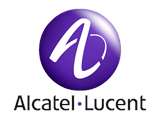 With its acquisition of Programmable Web in late June and (more recently) OpenPlug, Alcatel Lucent (ALU), by its actions, has indicated that it’s a changed company. In a “virtual” meeting with analysts this morning, some of the company’s top executives confirmed that the company is “embarked on a long journey” (to quote CEO Ben Verwaayen) that involves big strategic investments and R&D efforts that focus on what the company calls its “High Leverage Network” (HLN).
With its acquisition of Programmable Web in late June and (more recently) OpenPlug, Alcatel Lucent (ALU), by its actions, has indicated that it’s a changed company. In a “virtual” meeting with analysts this morning, some of the company’s top executives confirmed that the company is “embarked on a long journey” (to quote CEO Ben Verwaayen) that involves big strategic investments and R&D efforts that focus on what the company calls its “High Leverage Network” (HLN).
“HLN” is a great job of packaging and marketing by ALU. At one and the same time, it recognizes that the demand for capacity on public networks – which is being driven by the proliferation of multiple, connected devices – is growing at rates that appear to create scarcity on carrier networks. At the same time, although end-users and their devices are (forgive the term) consuming more bandwidth, they have established a hard ceiling on what they are willing to pay to connect to the resources that provide them with content and conversations. HLN solves the scarcity problem by using IP-communications as a great equalizer that would carry conversations, downloads, “backhaul” in ways that are indifferent to whether it traverses copper, fiber, 2G, 3G, 4G, LTE or femtocell networks.
In a more radical, yet true, vision of the communications landscape, ALU execs observed, “Connectivity is not exclusive to communications or even telecommunications verticals.” In the context of the event, it was ALU’s way of saying that, on a global basis, it will be marketing its infrastructure and the HLN concept to energy companies, transportation providers and government agencies, all of which have their own communications networks to leverage.
Moving up the stack, CEO Verwaayen waxed eloquently about the role of end-users and developers both in driving demand for increased capacity over an HLN and in defining new applications that extend greater power and control to the edge of the network. He said that North America is now leading the way in terms of adoption of new technologies, but that emerging markets in Asia, Latin America and “rural” regions around the world, will be sites for both innovation and growth in demand.
Verwaayen sees the market at a “change point” where smaller firms, new entrants and individuals have larger role to play in defining the future of communications. He made this observation even though Marcus Weldon and his cohort from Bell Labs were allotted about a half hour to describe their vision of “immersive communications”, a concept that melds end-to-end support of augmented reality, behavior analysis, gesture control and a number of other mixed reality technologies to (in their view at least) “bring people closer together” without growing their carbon footprint.
Thus ALU creates a dynamic tension between its locked down font of “innovation” (Bell Labs) and its support of application development by a broad spectrum of small developers and end-users. Verwaayen went so far as to observe that the U.S., and specifically California, is expected to be the hot spot for fostering this change. We certainly hope he’s right. It will make California the epicenter for Recombinant Communications.
Categories: Articles

 NiCE Interactions 2025: Agentic AI, Better Data, and a Whole Lot of Partnership
NiCE Interactions 2025: Agentic AI, Better Data, and a Whole Lot of Partnership  Getting It Right: What AI Agents Actually Mean for Customer Support (Webinar)
Getting It Right: What AI Agents Actually Mean for Customer Support (Webinar)  Beyond the Basics: How AI Is Transforming B2B Sales at TP
Beyond the Basics: How AI Is Transforming B2B Sales at TP  Five9 Launches Agentic CX: Toward AI Agents That Reason and Act
Five9 Launches Agentic CX: Toward AI Agents That Reason and Act